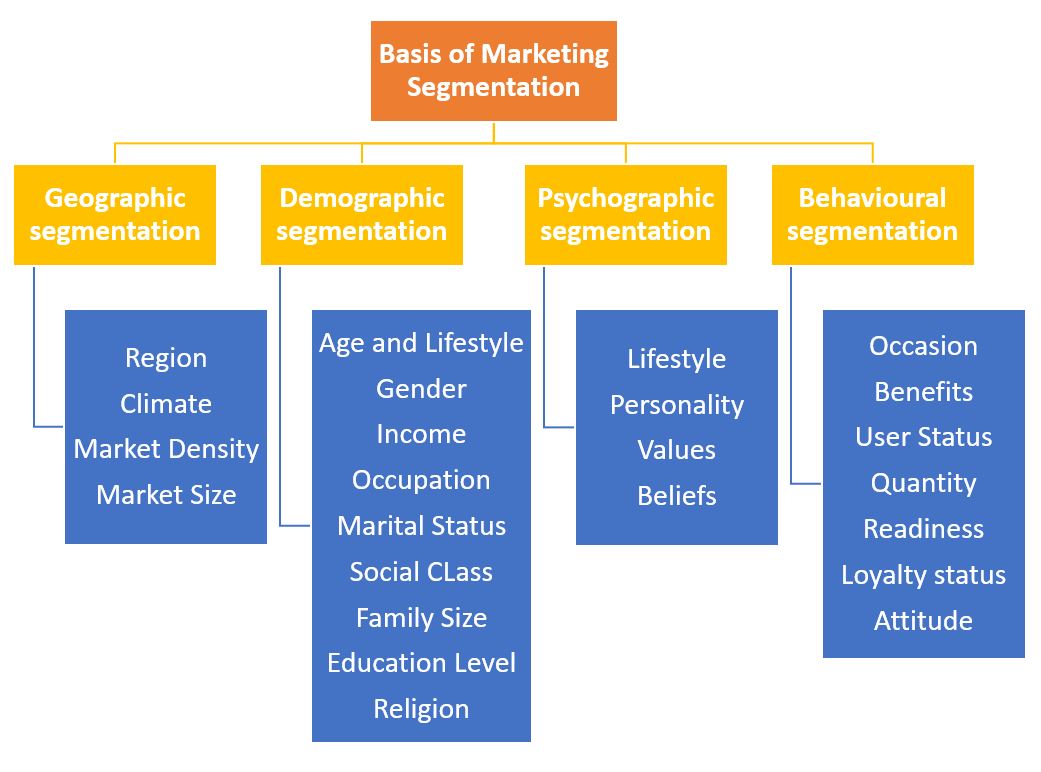STP stands for Market Segmentation, Targeting and Positioning. Most companies use a simple two-step process to formulate its marketing strategy i.e.
- Target Marketing (STP)
- Assembling the Marketing Mix 4 Ps
Companies develop different marketing strategies to satisfy different consumer groups. The process of selecting the right customer groups for a product is known as target marketing which is achieved through segmentation, targeting and positioning.
Market Segment – It is a subset of market made up of people or organisation with one or more similar characteristics that cause them to demand similar products and services based on price, quality, function etc. of the product or service.
Market segmentation – It is the process of dividing the total heterogeneous market into a small group of customers who share a similar set of needs and wants and hence represent a homogeneous group.
“Market Segmentation is subdividing of a market into distinct and increasing homogeneous subgroups of customers where any group can conceivably selected as a target market to be met with a distinct marketing mix.” – Philip Kotler
Mass marketing – It is a practice of selling the same product with the same marketing strategies to all the consumers in the market.
Basis of Market Segmentation
It is impossible for a marketer to develop marketing plans for every consumer. Hence, marketers aim at identifying broad classes of customers who have similar needs and wants and will react similarly towards a distinct marketing mix or marketing strategy.

Market segmentation involves dividing the market into small groups of customers that have common demands and who behave similarly to a particular marketing action. The different basis for segmenting a market are as follows:
Geographic segmentation
- Region – North, South, East, West
- Climate – Hot , Cold
- Market density – Less populated, Highly populated
- Market size – Small, Medium, Large
Demographic segmentation
- Age and life cycle stage – Children, Teenagers, Adults, Old
- Gender – Male, Female
- Income
- Occupation
- Marital status
- Social class
- Family size
- Educational level
- Religion
Psycho-graphic segmentation
- Lifestyle
- Personality
- Values
- Beliefs
Behavioural segmentation
- Occasion – Regular, Special
- Benefits – Quality, Service, Speciality, Economy
- User status – Potential user, 1st time user, Ex-user, Regular user, Non-user
- Quantity consumed – light, medium, heavy
- Buyer`s readiness stage – Unaware, Aware, Informed, Interested, Desire, Interested to buy
- Loyalty status – Hard core loyalists, Brand switchers
- Attitude – Enthusiastic, Positive, Indifferent, Negative, Hostile
Criteria for effective Marketing Segmentation
It must be Measurable – Selected segment must be measurable and identifiable.
It must be Substantial – Selected segment must be large enough to bring profits.
It must be Accessible – It refers to the degree to which a proposed segment can be effectively reached and served.
It must be Differentiable – Each market segment must be different from others in terms of needs and wants.
It must be Homogeneous within – Within the market segment all customers should have similar needs.
It must be Actionable – The selected segment must help marketers to develop effective marketing programmes to attract and serve the selected segment.
STP marketing helps brands craft their messages and develop and deliver tailored messages that their segmented target audiences find relevant and engaging. It is one of the most commonly used marketing methods and is also efficient